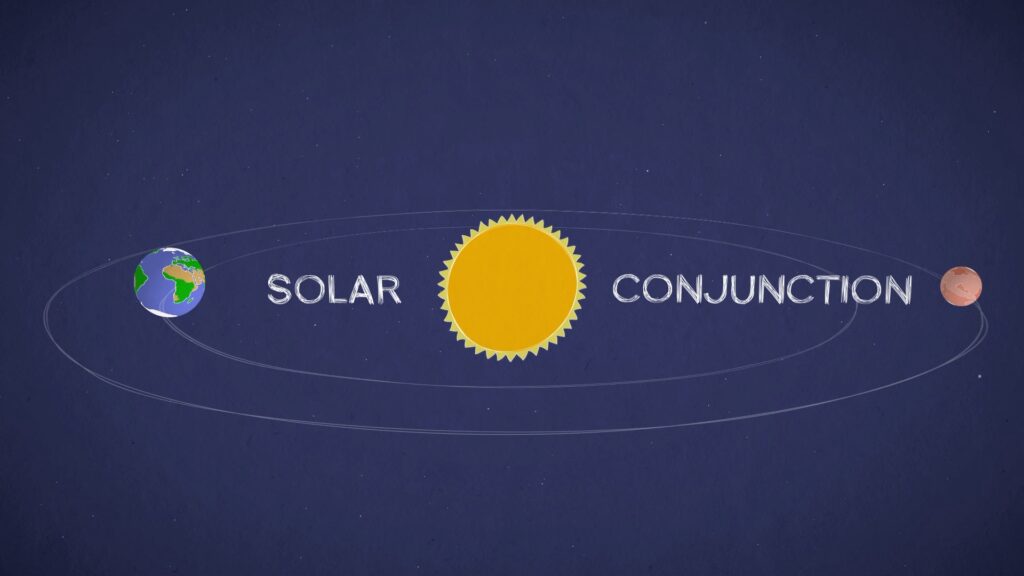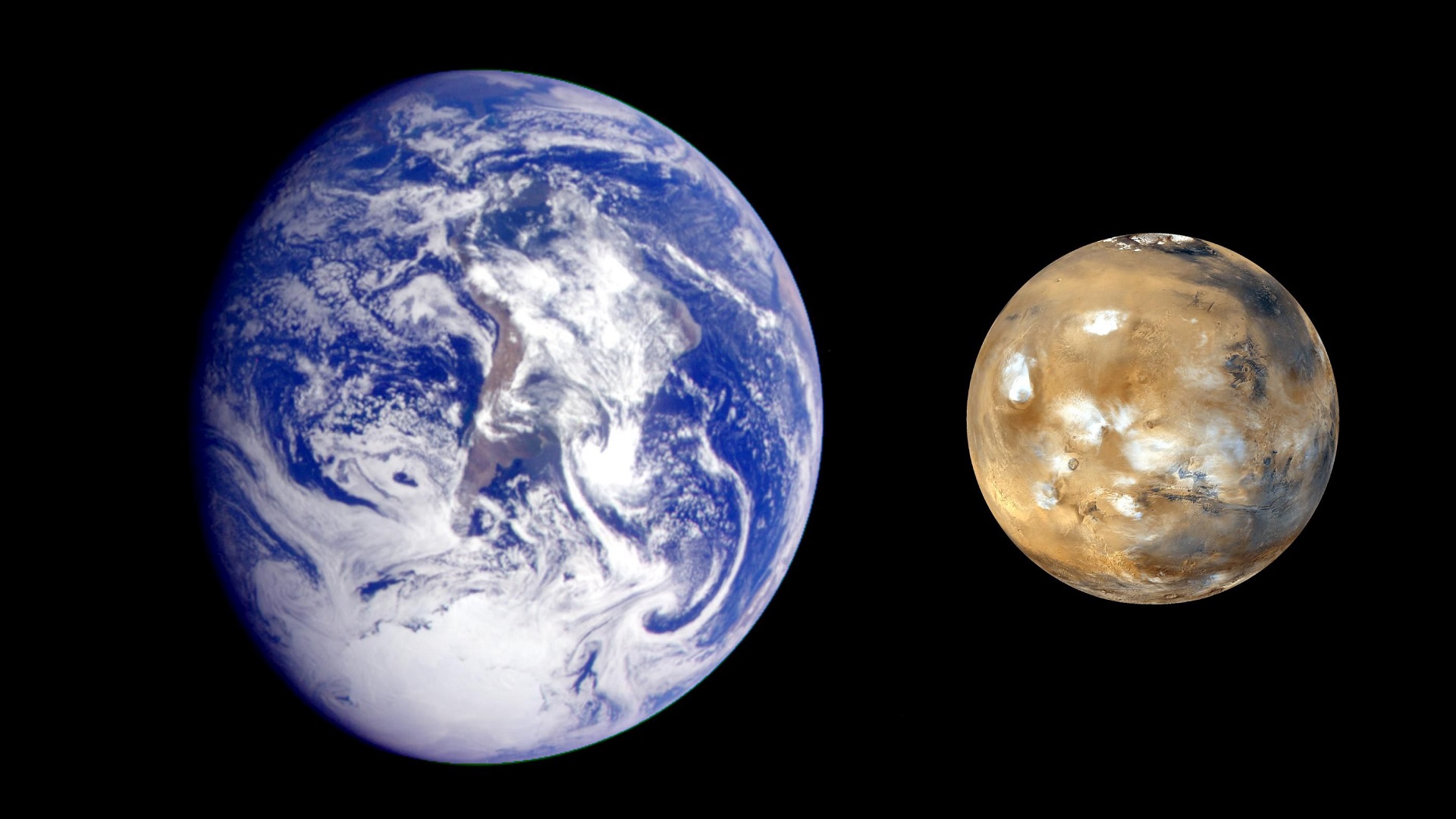We lost contact with Mars, but that’s normal. For two weeks, communications between the red planet and its blue “twin” were disrupted. In question ? The sun. NASA therefore prefers to take a break from exchanges with its rovers and probes.
From time to time, Earth loses contact with Mars. Not because of some mysterious disappearance of the red planet, but because of the orbital mechanics that take place within the Solar System. Indeed, the respective trajectory of the two planets means that they are sometimes out of sight of each other.
Earth and Mars are hindered by the Sun
The “at fault” in all this? The sun. The star around which Earth and Mars orbit poses a difficulty for communications when the two planets are on either side. The event occurs occasionally, because they do not orbit at the same speed around the Sun nor are they at the same distance.
This episode, which we call solar conjunction, took place, for example, in 2021. It is returning this year, from November 11 to 25, points out the American space agency (Nasa) in a blog post published on the 10th. This particular period requires a pause in exchanges between the satellites and rovers on site, on the one hand, and the teams remaining on Earth, on the other hand. This is until Mars and Earth become visible to each other again.

“ Although NASA usually receives notifications about the health of its Martian fleet throughout the conjunction, there will be two days when the agency will not have any news, because the Red Planet will be entirely behind the disk of the Sun », Notes the agency. In short, this will be almost the only exchange that will take place during this period.
The circulation of data during a solar conjunction is hardly recommended: the hot and ionized gases expelled by the Sun are likely to corrupt the signals sent from Earth to Mars, and vice versa. However, degraded data can distort the reading of measurements recorded on site or, even worse, interfere with the controls to direct the rover.
NASA therefore prefers to delay the time that the solar conjunction passes, with a pause in contacts. This will not have a huge impact on the scientific monitoring of the red planet: even if the sail is briefly reduced, local observations will continue. Clearly, science will continue, despite everything. The transmission may be shifted.
Everything will be back to normal at the end of the month and data from machines such as the two rovers Perseverance and Curiosity, the Odyssey, Maven and MRO probes and the Ingenuity helicopter will once again be able to circulate in space. The next interruption caused by a solar conjunction is expected in two years. This is how often it comes back.
Subscribe to Numerama on Google News so you don’t miss any news!
